Summary
The majority of flea infestations begin outdoors. Eggs are dropped into yards by infested wildlife. A re-infestation cycle exists where territories of feral and domestic animals overlap. 95-99% of fleas consist of eggs, larvae, and pupae living in the environment. It’s important to target these stages for control.
Pivot 10
Pivot 10 is the best yard spray, based on price and capacity (may change).
Adulticides aren’t very effective for outdoor flea control. Insect growth regulators last longer and target immature stages. When pyriproxyfen was developed, it was one of the first IGRs photostable enough to be used outdoors. It became the best choice for outdoor flea control and remains so. Pyriproxyfen can control fleas in yards for at least 3 weeks.
Comparison
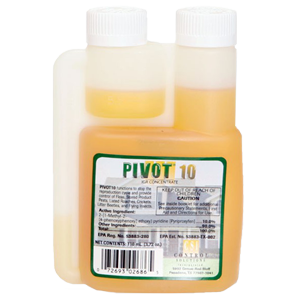 |
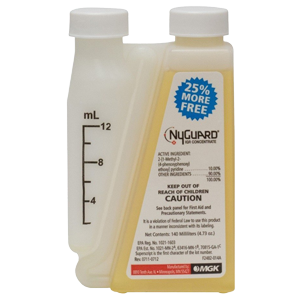 |
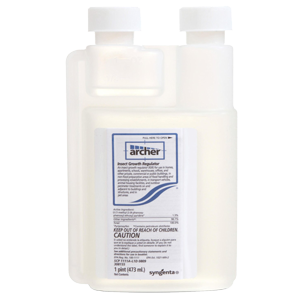 |
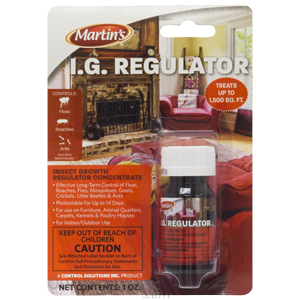 |
|
| Product Name | Pivot IGR | Nyguard IGR | Archer IGR | Martin’s IGR |
| Price | $32 | $42 | $52 | $17 |
| Size | 3.72 ounces | 4.73 ounces | 16 ounces | 4 ounces |
| Capactiy | 41250 sq ft | 52500 sq ft | 24000 sq ft | 6000 sq ft |
| Price / 100 sq ft | $0.08 | $0.08 | $0.22 | $0.28 |
| Application | Spray | Spray | Spray | Spray |
| Use On | Yards or Indoors | Yards or Indoors | Yards or Indoors | Yards or Indoors |
| Kills | Eggs Larvae |
Eggs Larvae |
Eggs Larvae |
Eggs Larvae |
| Active Ingredient | Pyriproxyfen | Pyriproxyfen | Pyriproxyfen | Pyriproxyfen |
| A.I. Concentration | 10% | 10% | 1.3% | 1.3% |
| Duration | Outdoors: 3 weeks Indoors: 7 months |
Outdoors: 3 weeks Indoors: 7 months |
Outdoors: 3 weeks Indoors: 7 months |
Outdoors: 3 weeks Indoors: 7 months |
| Product Label | ||||
| MSDS | ||||
| FleaScore | ||||
| Reviews |
- Prices are based on Amazon.com at time of publishing.
- FleaScores are based off of product details (price, size, active ingredients, etc), as well as reviews aggregated from 3rd party sources.
Details
Why Yards Need to be Treated
Immature Stages Live in the Environment
Adult fleas stay on their host once it’s acquired. Eggs are laid on the animal, but they aren’t sticky and fall off within a few hours. The eggs then develop in the environment, eventually maturing into adults. 95-99% of flea populations consist of eggs, larvae, and pupae living in the environment.
Infestations Begin Outdoors
Most flea infestations originate outdoors. Eggs are dropped into home yards by infested animals. Within a few weeks the eggs mature into adults. Dogs and cats then quickly acquire fleas when they venture into infested areas of the yard.
Fleas can jump and crawl short distances, but they primarily rely on hosts for passive dispersal. Numerous small animals in urban settings can carry fleas. Common hosts are opossums, raccoons, foxes, coyotes, skunks, and feral dogs and cats. Flea eggs continually fall from infested wildlife. The animals act like living saltshakers, with eggs dropping wherever they roam throughout neighborhoods.
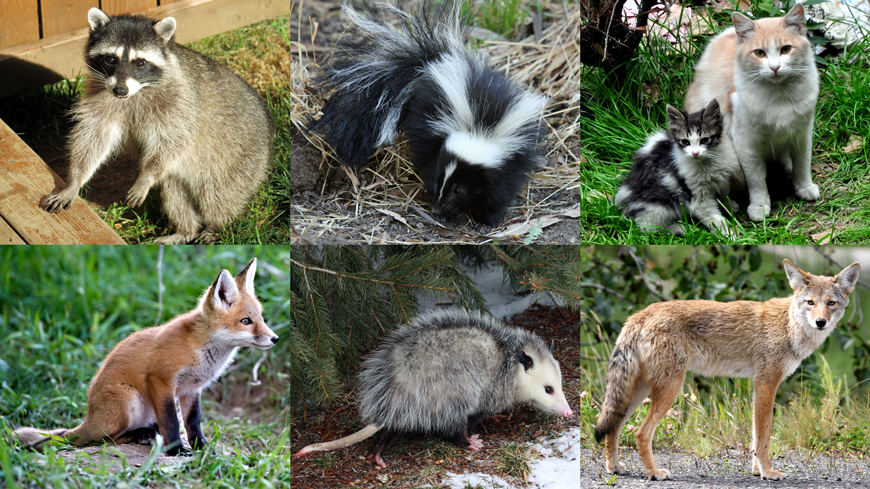
Img 1 Common wildlife hosts of cat fleas: raccoon, skunk, feral cat, fox, opossum and coyote.
Once a pet acquires fleas, the parasites stay on its body. Adult fleas rarely transfer between hosts. Newly acquired fleas will feed, mate, and being laying eggs in 24-48 hours. When the pet re-enters the home, eggs will begin falling indoors.
Fleas can also hitchhike on people. As a person walks through an infested area of a yard, fleas may jump onto their shoes and socks. The person then unknowingly brings fleas into the home to infest pets.
Re-Infestation Cycle
Pets can be infested by fleas brought into yards by feral animals. And, conversely, urban wildlife can be infested by eggs dropped from pets. The animal then further spreads the infestation around the neighborhood. There’s a continual re-infestation cycle wherever feral and domestic animal territories overlap. Re-infestation pressure is often higher than homeowners assume, because most wild hosts are nocturnal and rarely seen.
Fleas can’t survive freezing temperatures in the winter. However, in subtropical climates, such as Florida, it’s warm year-round and fleas can continue developing outdoors. In these regions, dogs and cats face substantial and continuous infestation pressure.
Unseen Flea Reservoirs
Outdoor flea populations can cause heavy pet infestations, providing a constant source of fleas within homes. In one survey, a dog had over 60 fleas. Curiously, an indoor infestation was nearly nonexistent, as evidenced by flea traps catching little to no fleas. To further investigate, the dog’s fleas were removed with a flea comb. The flea-free dog was then let outside. It quickly acquired many new fleas after brief exposure in the yard. The dog ventured into a flea hot-spot underneath the deck, which was used as shelter by infested raccoons.
Selecting Insecticides for Yards
Most flea control advances have been focused on pets and indoors, with outdoor control being largely neglected. As a result, few insecticides are recommended for controlling fleas in yards. In the recent past, this created near-crisis problems in many southern states.
A stumbling block with outdoor flea control is duration. Contact insecticides kill existing adult fleas, but the effect is short-lived. Unfortunately, the bulk of infestations are immature stages, so adults will continue emerging for weeks. Thus, an effective insecticide needs to have long-lasting residual activity.
Adulticides
Traditional insecticides don’t provide long-lasting flea control. Permethrin and other pyrethroids are commonly sprayed outdoors, but these compounds perform poorly even when applied at high rates. Fenvalerate, a photo-stable pyrethroid, remains active longer and may be more effective. Most adulticides significantly decline in activity by 7 day. Of many compounds tested, chlorpyrifos provided the best results, killing over 99% of adult fleas for 7 days. However, products containing chlorpyrifos or diazinon should be avoided, as these organophosphates pollute waterways.
Conventional insecticides perform even more poorly against immature fleas. After 24 hours, less than 50% of larvae will be killed in soils treated with chlorpyrifos, bendiocarb, permethrin, diazinon, propetamphos, or carbaryl.
Insect Growth Regulators
The development of insect growth regulators (IGRs) has resulted in a new paradigm for flea control. The residual activity of IGRs prevents eggs and larvae from developing into adults. Thus, larval habitats can be treated to kink the life cycle. The two primary groups of IGRs are chitin synthesis inhibitors and juvenoids.
Chitin synthesis inhibitors must be ingested by feeding larvae. These compounds include alsystin, cyromazine, diflubenzuron, and lufenuron. Diflubenzuron, for example, has been seen to remain active for up to 6 months in simulated yard conditions.
Juvenoids, or juvenile hormone analogs (JHA), have both contact and oral activity. This class of IGR includes methoprene, fenoxycarb, and pyriproxyfen. These compounds are generally considered best for environmental flea control and are widely used. They’re environmentally safe pesticides. Pyriproxyfen is the IGR of choice for outdoor use. Methoprene is unstable in UV radiation, and thus outdoor residual activity is relatively poor. And, while fenoxycarb shows strong activity against immature fleas outdoors, its manufacturer voluntarily suspended sales in February 1996.
Pyriproxyfen: The Best Flea Control for Yards
Initially, JHAs weren’t a viable option for outdoor flea control. The first JHA was methoprene, and it wasn’t stable in UV radiation. Yard treatments were limited to conventional insecticides. Then in the 1980s, the second generation of JHA was discovered. The so-called phenoxy JHAs included fenoxycarb and pyriproxyfen. These new compounds were then found to be photostable. This led to a new, effective way to deal with fleas outdoors.
Other Names
Pyriproxyfen was developed in Japan, and subsequently trademarked there as Sumilarv. It came to the United States in 1990 trademarked as Nylar. Another name often found on active ingredient labels is 2-[1-methyl-2-(4-phenoxyphenoxy)ethoxy]pyridine.
Mode of Action
Pyriproxyfen works by mimicking the action of juvenile hormone (JH) in insects, explaining the compound class name juvenile hormone analogs. Pyriproxyfen is structurally unrelated to JH, but still mimics the hormone’s biological activity.
Juvenile Hormone
Insect larvae are encased in semi-hard exoskeleton called a cuticle. To grow, they must periodically shed this “skin”. Molting has co-evolved with specific hormones, one of which is juvenile hormone. When JH is present, larvae will continue growing. They won’t pupate. The hormone prevents the insect from becoming an adult before it’s fully grown.
JH works in conjunction with another hormone called ecdysone. To trigger a larval molt, levels of ecdysone rise and levels of JH drop. To trigger metamorphosis into an adult, levels of ecdysone rise and there’s an absence of JH. Adult insects also have JH, even though it’s absent at the time of metamorphosis. The hormone plays a role in creating egg cells.
Analogs of Juvenile Hormone
Synthetic JH analogs function in similar ways as JH, but they’re more chemically stable. Their stability allows them to compete for JH binding site receptors. JHAs are absorbed through the cuticle and persist in the insect’s body during periods of development when JH is usually absent. As a result, they prevent the activation of genetic switches needed for transitioning into more mature stages.
JHAs are several times more active than native JH, with pyriproxyfen being among the most potent. In addition, endogenous JH esterases are unable to break down pyriproxyfen, so it can persist in the insect for a long duration. Unlike natural JH, pyriproxyfen is also toxic to eggs and inhibits egg production in females. Thus, pyriproxyfen may be more than a JH mimic.
How Pyriproxyfen Control Fleas
Eggs
Flea egg shells are soft, gelatinous, and highly permeable. Pyriproxyfen quickly penetrates eggs. Eggs exposed to pyriproxyfen will fail to develop. Depending on egg age, it causes embryonic (no embryo forms) or post-embryonic (larvae die) effects. Freshly laid eggs are most sensitive and won’t hatch. 1-2 day old eggs may hatch, but larvae will die shortly after hatching. Exposures as short as one hour will cause lethal post-embryonic effects.
Larvae
The larval stage is most susceptible to IGRs. Flea larvae can be exposed through direct contact, or by feeding on tainted adult feces. Pyriproxyfen accumulates in larvae, acting like JH and preventing pupation. Instead of becoming adults, the fleas transform into a larval-pupal or pupal-adult intermediates which are unable to function or reproduce. Eventually they’ll die. Pyriproxyfen also damages the internal tissues of larvae, causing secondary lethal effects.
Flea larvae remain vulnerable to pyriproxyfen until they’ve successfully pupated. When fully mature larvae are exposed before spinning a cocoon, there’s a 98% reduction in adult emergence. They’ll never become pupae. When cocoons less than two days old are exposed, there’s an 84% reduction in adult emergence. They’ll reach the pupal stage, but most never emerge as adults.
Pupae & Cocooned Adults
Pupae and pre-emerged adults are tolerant to JH mimics. The chemical diffuses across the pupal case. These stages make controlling fleas difficult, because pre-emerged adults can stay quiescent in their cocoons for up to 5 months. This duration is called the “pupal window”.
When pupae and cocooned adults are exposed to pyriproxyfen, they’ll survive to emerge as adults. However, emergence occurs sooner, which shortens the pupal window. Additionally, the adults die prematurely after emerging, with 50% dying within six days. Females are especially vulnerable, often dying during the first 48 hours of blood feeding. While alive, there’s no significant effect on egg production or offspring survival (unless adults exposed after emerging).
Adults
Pyriproxyfen is slightly toxic to adult fleas. Death isn’t immediate, but 96% of adults die 8-10 days after contact. Females are more susceptible than males, possibly because JH regulates more biological functions. JHAs aren’t typically effective against adults, so pyriproxyfen’s adulticidal effect is unusual. This oddity is significant, because the main disadvantage of IGRs is their failure to kill adults.
Female fleas can’t lay viable eggs when exposed to pyriproxyfen. The eggs are produced prematurely, lack a yolk, appear darkened, and collapse when laid. 70 hours after being free from exposure, they’re able to lay normal eggs again.
How Long Pyriproxyfen Lasts Outdoors
Pyriproxyfen has excellent residual activity outdoors. How long it lasts depends upon the concentration, application rate, weather, and soil type. In the most commonly cited study, topsoil treated with pyriproxyfen controls 80% of fleas for 3 weeks. For precise information on formulation and residual effect, consult product labels.
In dry soil protected from rain, pyriproxyfen remains active for at least 63 days Fig 1. Activity decreases in wet soil because of leaching and degradation by soil organisms. However, a related study found rainfall and leaching aren’t significant factors. Pyriproxyfen performs better in certain soil types. It binds to clay and organic matter within soil, and then may not contact larvae. Sand, in contrast, is relatively inert and doesn’t affect activity. In sandy, partially shaded soil, pyriproxyfen provides significant control for 20 weeks. It can last 44 weeks in high concentrations. Similarly, another study found high application rates provide 75% control for 11 months.
Fig 1 Percent inhibition of adult flea emergence (y-axis) across 9 weeks (x-axis) in treated soil within wooden containers protected from the rain.
Pyriproxyfen also remains residually active on a numerous construction materials, such as wood, metal, and concrete. As a result, it’s possible to control pests in warehouses and storage facilities.
The Best Flea Spray for Yards
Pivot 10
Pivot 10 is a 10% pyriproxyfen spray concentrate. The active ingredient is the same as competitors. However, Pivot is currently the best value, based on price and sq. ft. coverage.
Pyriproxyfen is the insecticide of choice for outdoor flea control, and there are multiple spray concentrates available. The primary factors to consider are price and amount of area that needs to be treated. Pivot 10 is currently the best value among competitors. It costs around $32. And it contains 3.72 ounces of 10% pyriproxyfen concentrate, which can treat 41250 square feet. As a metric for comparison: Pivot 10 costs $0.08 per 100 sq. ft.
While Pivot 10 is the best value, Martin’s IGR may be a more cost-efficient option for those with smaller yards (see below).
Good Flea Sprays for Yards
NyGuard
NyGuard is another 10% pyriproxyfen concentrate. It’s comparable in price per sq. ft. to Pivot 10, but contains more product and can cover a greater space.
Nyguard is a 10% pyriproxyfen spray concentrate. It contains 4.73 ounces of product, and is capable of treating 52500 sq. ft. At a price of $42, it costs around $0.08 per 100 sq. ft. It’s similar in value to Pivot 10, but one bottle can treat a larger area.
Archer
Archer is a 1.3% pyriproxyfen concentrate. While it contains 16 ounces, the lower concentration and higher price make it a worse value than Pivot or Nyguard.
Archer is a 1.3% pyriproxyfen spray concentrate. With 16 ounces, it contains more product than its competitors. However, the lower concentration of active ingredient means less area can be treated (24000 sq ft). At a price of $52, Archer costs $0.22 per 100 sq. ft.
Martin’s
Martin’s I.G Regulator is the best option for those with small properties. It’s capable of treating 6000 sq. ft.
Martin’s I.G Regulator is a 1.3% pyriproxyfen concentrate. It contains 4 ounces of product, which can treat an area of 6000 sq. ft. At a price of $17, Martin’s costs $0.28 per 100 sq. ft. While this is a relatively poor value to its competitors, Martin’s I.G Regulator is the cheapest option for those with small yards.
Tips for Spraying Yards
Before Spraying
Remove Debris
Flea larvae are vulnerable to desiccation. They’ll die in open, sun-exposed areas. The first step in outdoor flea control involves removing organic debris. Give special attention to flea hot-spots, namely shady areas. Prime examples are pet’s favorite sleeping spots, such as under a cool porch in the summer. Mow, rake, or remove leaf-litter by hand. By keeping these zones free of leaves and dense vegetation they’ll become less habitable for fleas.
Restrict Animal Access
If possible, block animals from reaching potential flea hot-spots. By restricting access, wildlife can’t deposit eggs into these areas, and pets can’t wander in to acquire fleas. Common places to barricade include underneath homes, porches, decks, and verandas. Blocking access also helps with control, because these areas are often difficult to reach with sprays.
Preventing access to treated areas also helps the insecticide’s effect. Foot traffic and digging can substantially reduce residual activity if treated soil is displaced or buried.
Where to Spray
Outdoor flea habitats are often poorly targeted. Areas where fleas can develop are limited, so spraying the entire yard is wasteful and irresponsible. And it can lead to undesirable environmental consequences. Outdoor treatments may not even be necessary in mild to moderate infestations, as long as pets and homes are treated. One survey only found fleas outdoors in 2 of 45 infested homes.
How much treatment is needed depends upon the area’s size that confines the pet. Total outdoor control is impossible if a dog roams several acres of land. However, smaller areas of confinement can be treated, as well as sections of larger yards where pets spend the most time. It is seldom necessary to treat the whole yard or lawn areas. Before spraying, evaluate the yard for an existing flea populations and determine where pets frequently rest.
Climate Requirements
Flea eggs and larvae can’t survive significant changes in temperature and humidity. As a result, suitable zones for development are limited, especially outdoors. Most eggs won’t survive. Infestations continue because fleas lay large numbers of eggs, and the parasites have a close association with their host and its resting sites. Outdoor survival is highest in early fall.
Young fleas develop in areas with shade and wind protection. Sunny areas can’t support developing fleas. Relative humidity (RH) must exceed 45% even during the hottest parts of the day. Survival isn’t even possible under trees, or in maintained lawns, due to the low RH. Spraying sunny areas of yards is unnecessary and ineffective. However, in severe infestations, these areas can be sprayed with an adulticide to quickly kill any emerged adults.
Food Requirements
Flea larvae can only survive in places with adequate food. Their diets consist of “flea dirt” and eggs. Eggs won’t survive that drop from animals traveling large distances, because it’s unlikely they’ll fall into areas with larval food. Successful development occurs where both flea eggs and flea feces fall from animals, such as places where the host grooms and sleeps. Itchy flea bites help facilitate this, as they cause hosts to scratch and dislodge eggs and feces.
Flooding
Larvae will drown in areas with heavy rainfall, sprinklers, or poor drainage. The water also dissolves and washes away flea feces (larval food). Larvae stay in the upper few millimeters of soil. If soil moisture exceeds 7%, they’ll move to the surface. Most will drown when soil moisture exceeds 20%. Years with heavy summer rain have low numbers of fleas.
Foot Traffic
Flea larvae are unlikely to survive in areas with substantial foot traffic.
Outdoor Flea Hot-Spots
Flea eggs fall anywhere invested animals visit, with most accumulating in animals’ favored resting areas. Areas that are shady, cool, humid, and protected from wind are where fleas are most likely to survive and develop into adults. Outdoors, larvae often live under dense mats of ground cover or shrubs. They avoid sunlight and will move under grass, branches, leaves, or soil.
Specific areas to target include dog houses, kennels, pet shelters, flower beds, mulch beds, crawl spaces, under structures (e.g. decks, patios, and mobile homes), vegetation around buildings, areas next to the foundation, and any other areas where pets rest in the shade.
When spraying, give special attention to any favorite sleeping places of pets. In the summer, flea hot-spots tend to be where animals go to escape the sun’s heat. For example, areas under homes and porches are especially troublesome. Likewise, the soil in and around dog houses is frequently heavily infested. However, in hot climates, larvae die in structures that trap heat (e.g. dog houses).
The outdoor source of fleas is often evident. In multiple home surveys, investigators identified possible flea-prone areas, such as under a deck. Upon walking near the area, they quickly had fleas on their socks. Pets themselves also quickly acquire fleas when they go into infested zones.
How to Spray
It’s best to use a low pressure sprayer when spraying for fleas. The low pressure will result in an even distribution of insecticide. High pressures can disrupt the larval habitat and even displace the soil, resulting in an uneven chemical distribution.
Final Considerations
Pyriproxyfen is a broad-spectrum insecticide, and is effective against a large range of insects. It’s most effective against species where adults, not larvae, are active pests. Larvae are most susceptible stage, but they aren’t killed immediately. Instead, they’re prevented from reaching adulthood. As a result, it can take a while before the effects of the treatment are noticeable.



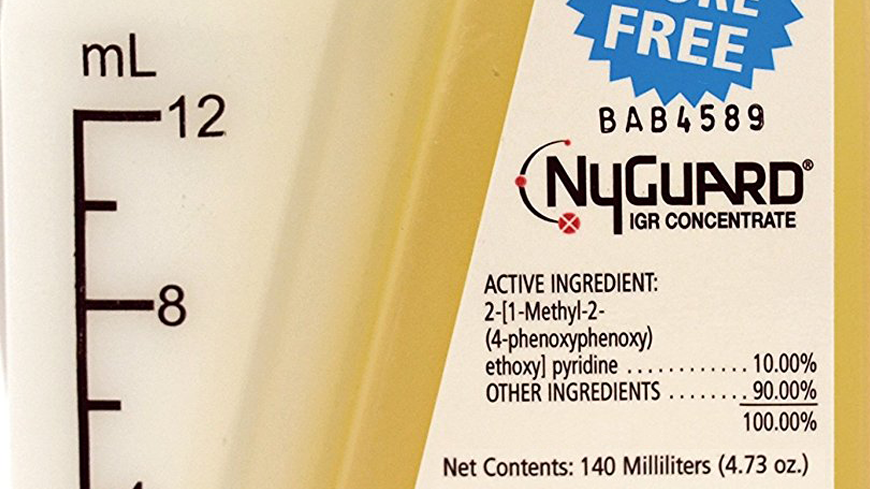
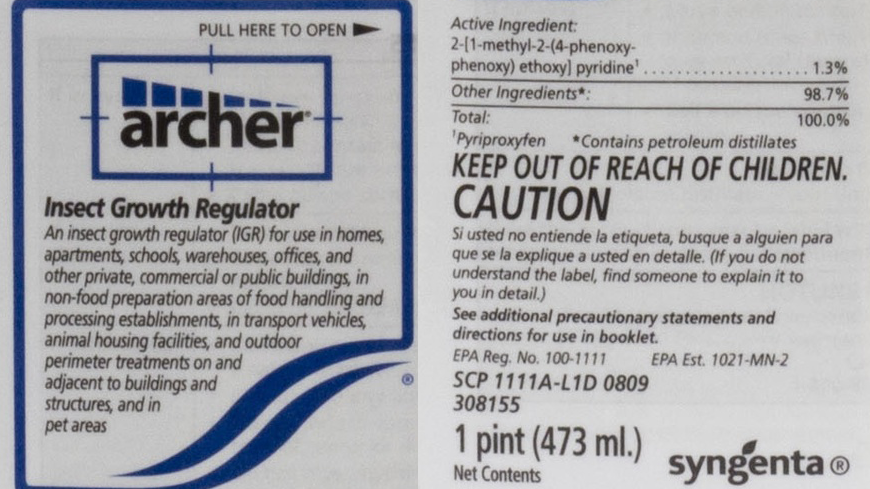



You must log in to post a comment. Log in now.